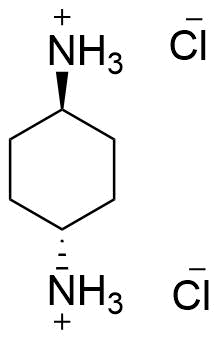Binding Properties
| 𝜈 | Molecule 1 : 1 Host | ||
| Ka = | 57.0 | ± 5.0 | M-1 |
| Kd = | |||
| logKa = | |||
| T | 25.0 °C | ||
| Energy | kJ mol-1 | kcal mol-1 | |||
|---|---|---|---|---|---|
| ΔG | = | -10.02 | ± 0.22 | -2.39 | ± 0.05 |
These are the specifications of the determination of the experimental results.
| Detection Method: | Direct | ||
| Assay Type: | Direct Binding Assay | ||
| Technique: | Nuclear Magnetic Resonance | ||
Detailed information about the solvation.
| Solvent System | Complex Mixture | |
| Solvents | Deuterium Oxide | |
| Additives | Sodium dihydrog... | 20.0 mM |
| Total concentration | 20.0 mM | |
| pH | 7.4 |
Please find here information about the dataset this interaction is part of.
| Citation: |
V. Sindelar, N. She, D. Moncelet, L. Gilberg, X. Lu, V. Briken, L. Isaacs, SupraBank 2026, Glycoluril‐Derived Molecular Clips are Potent and Selective Receptors for Cationic Dyes in Water (dataset). https://doi.org/10.34804/supra.2021092836 |
| Link: | https://doi.org/10.34804/supra.2021092836 |
| Export: | BibTex | RIS | EndNote |
Please find here information about the scholarly article describing the results derived from that data.
| Citation: |
N. She, D. Moncelet, L. Gilberg, X. Lu, V. Sindelar, V. Briken, L. Isaacs, Chem. Eur. J. 2016, 22, 15270–15279. |
| Link: | https://doi.org/10.1002/chem.201601796 |
| Export: | BibTex | RIS | EndNote |
Binding Isotherm Simulations
The plot depicts the binding isotherm simulation of a 1:1 interaction of cyclohexane-1,4-diaminium chloride (0.3508771929824561 M) and Bisglycouril tetraoxypropylsulphite sodium (0 — 0.7017543859649122 M).
Please sign in: customize the simulation by signing in to the SupraBank.




